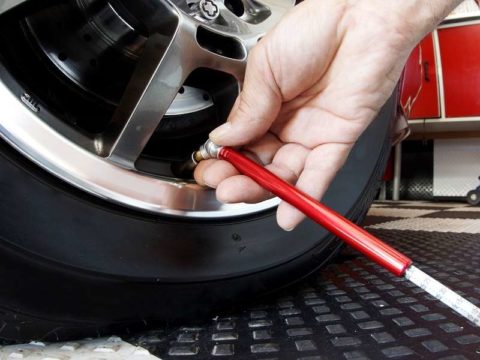When it comes to tires most consumers just go to the tire shop look for the cheapest way out and buy that. When purchasing a used car very few folks ask about the tires on the car. Unless you’re buying a custom vehicle or sports car the vast majority of consumers just don’t give too much thought to tires.
You really should have a basic knowledge about tires and the importance of having the right tire. For example low tire pressure creates drag which results in the engine having to work harder to push the car down the road. Less fuel economy when your engine works harder. From a safety stand point low tire pressure creates heat because of the drag which can cause blowouts.
Wear on tires can indicate issues with wheel alignment. Excessive wear on one side or another of the tire. Get to a shop and check the alignment. You can also with the tires all properly inflated, road test your vehicle. While in motion leaving your hands around the wheel but off your vehicle should have a very slight fade to the right while in motion. The reason your vehicle has this ever so slight fade is to move you away from oncoming traffic just in case you fall asleep at the wheel.
Tire tread depth is extremely important for safety. Tread helps grip the road, move water away and prevent hydroplaning. A new car tire will have 10/32s of tread depth. Tire depth gage can be purchased at your local auto parts store for a couple of bucks. You measure tread depth on outside treads on both sides and average the number. Tires should be replaced at 2/32’s at the very latest.
Replacing tires is based on the tread depth we just talked about, and age. Just because tires have great tread does not necessarily mean the tire is safe. Check sidewalls signs of dry rot. This can occur with age but also in high temperatures. It will look like cracks in the sides of the tires, noticeable but not big. If dry rot is visible replace tires immediately.
Depending on the quality of tire you have will also dictate when you need to replace them. So many things can cause tires to wear out faster or last longer. Typically less expensive tires will give you 15K to 20K miles. Higher quality tires will last up to 60K miles. Depending on your pocketbook you can even get tires rated to 100K miles.
Tires come in many sizes so what does the size on the tire mean? Here is what Goodyear™ tire says: For example, in a size P215/65 R15 tire, the 65 means that the height is equal to 65% of the tire’s width. The bigger the aspect ratio, the bigger the tire’s sidewall will be. Construction. The letter “R” in a tire size stands for Radial, which means the layers run radially across the tire. The sizing numbers and information on the tire correlates to something. The tires manufacture date is also on the side of the tire. This is very important to ask when buying tires. Especially if the tire prices seem too good to be true, someone might be trying to dump some old tires, make sure you know. Just because they’re brand new does not mean they weren’t manufactured a couple of years ago. We talked about dry rot and if the tires were stored stacked on top of each other they can develop flat spots.
Storing cars for long periods of time can create flat spots on tires as well. Move stored vehicles now and again to prevent this from happening. Flat spots ruin the tire, so it can be costly.
Check your tire pressure at every fill up. You will be pleasantly surprised with tire life and better still fuel economy. Vehicles get better fuel millage when they can run down the road with no friction.
Rotate your tires as recommended by the manufacturer this to will help with the life of your tires.
With just a few simple regular tire maintenance intervals you will enjoy not having to replace tires as often and up to a 5% increase in fuel economy.
